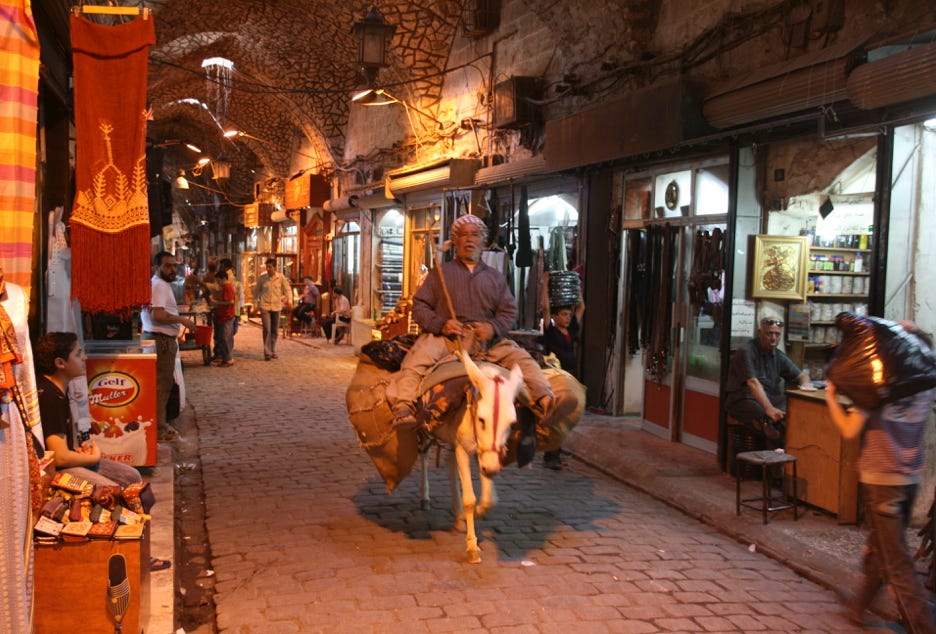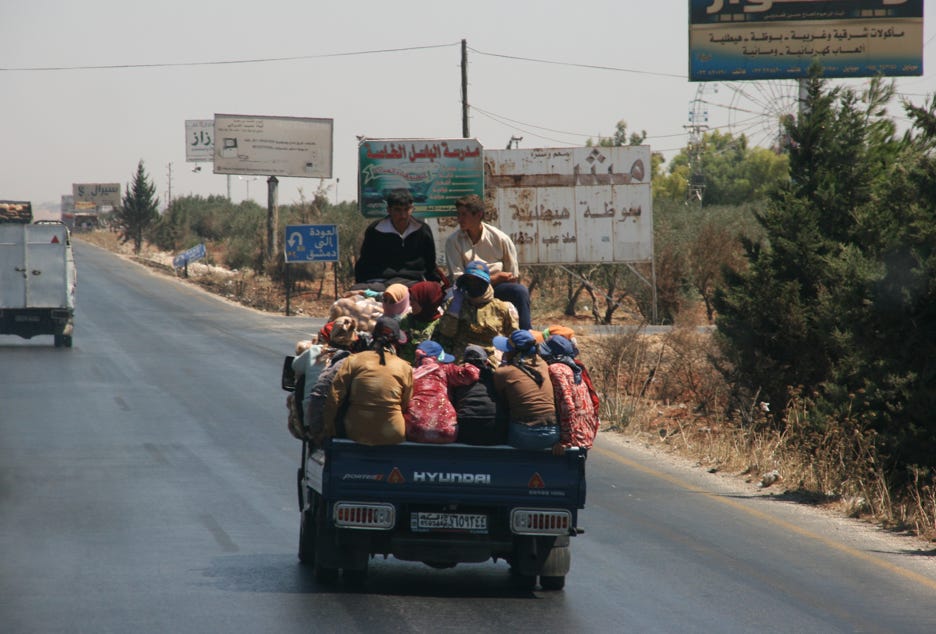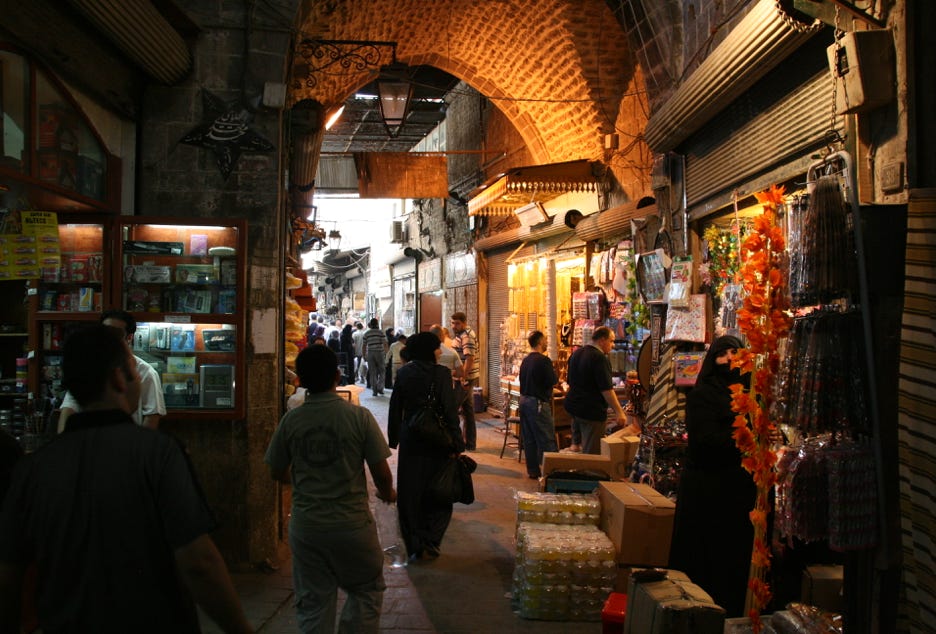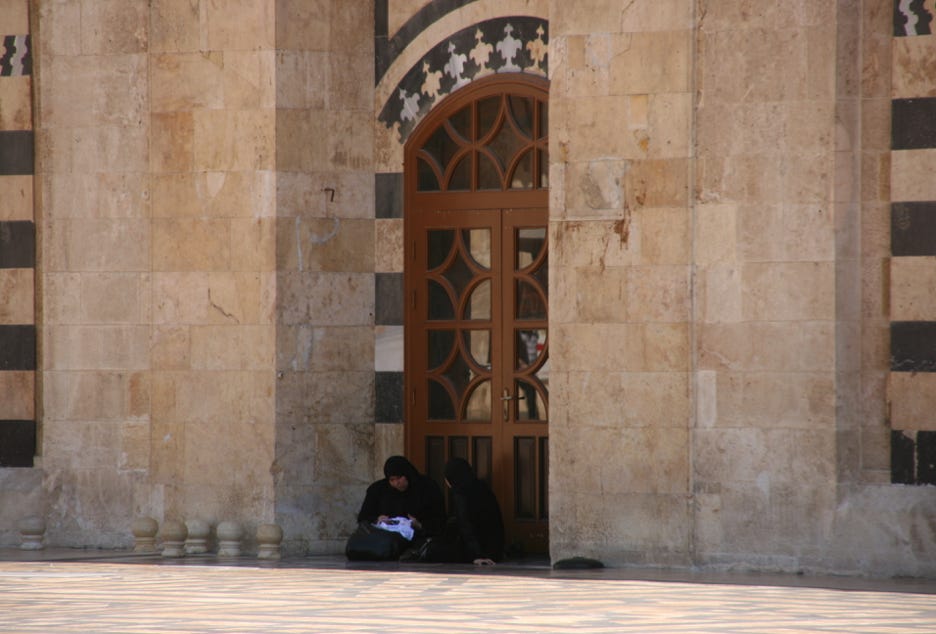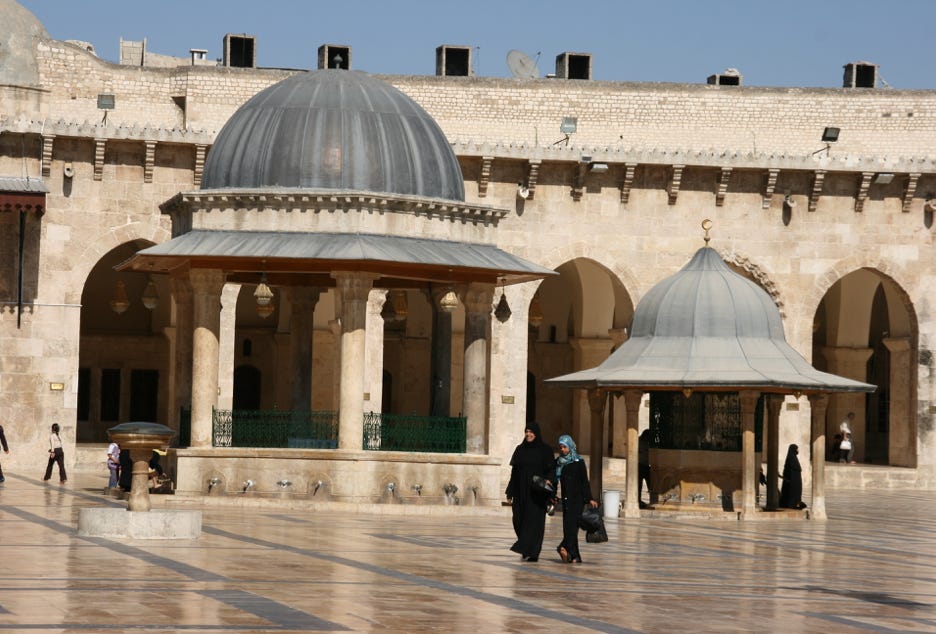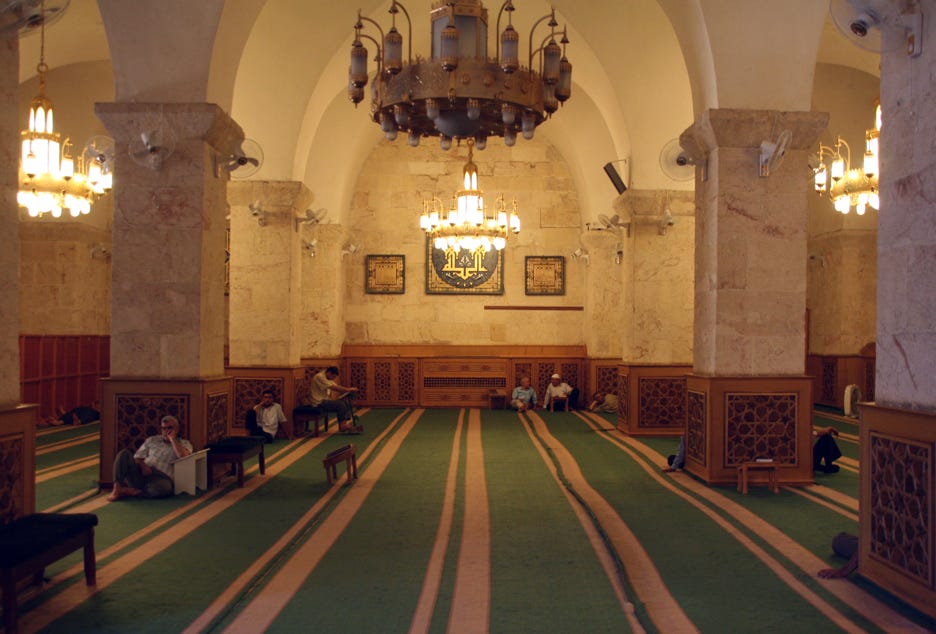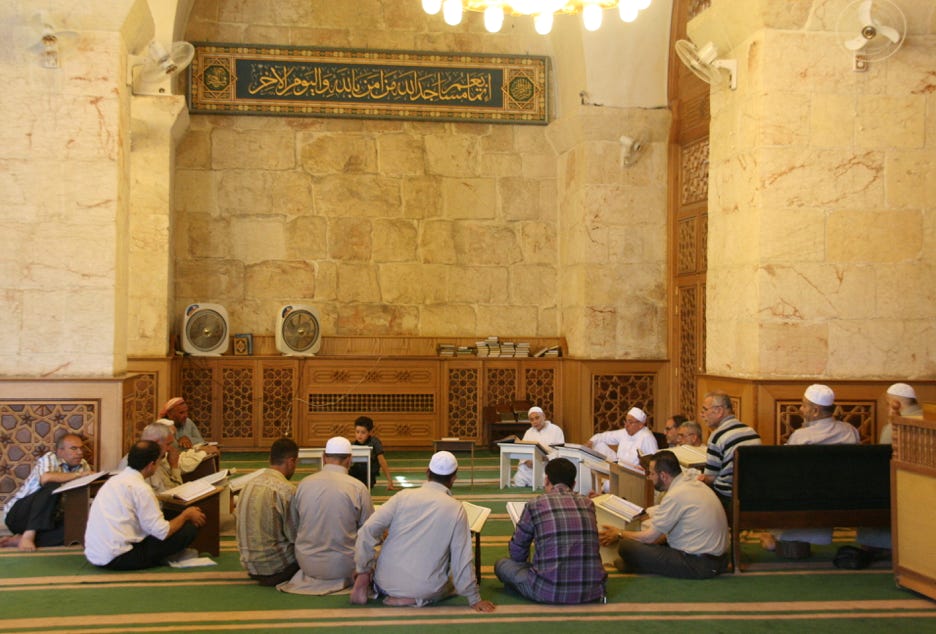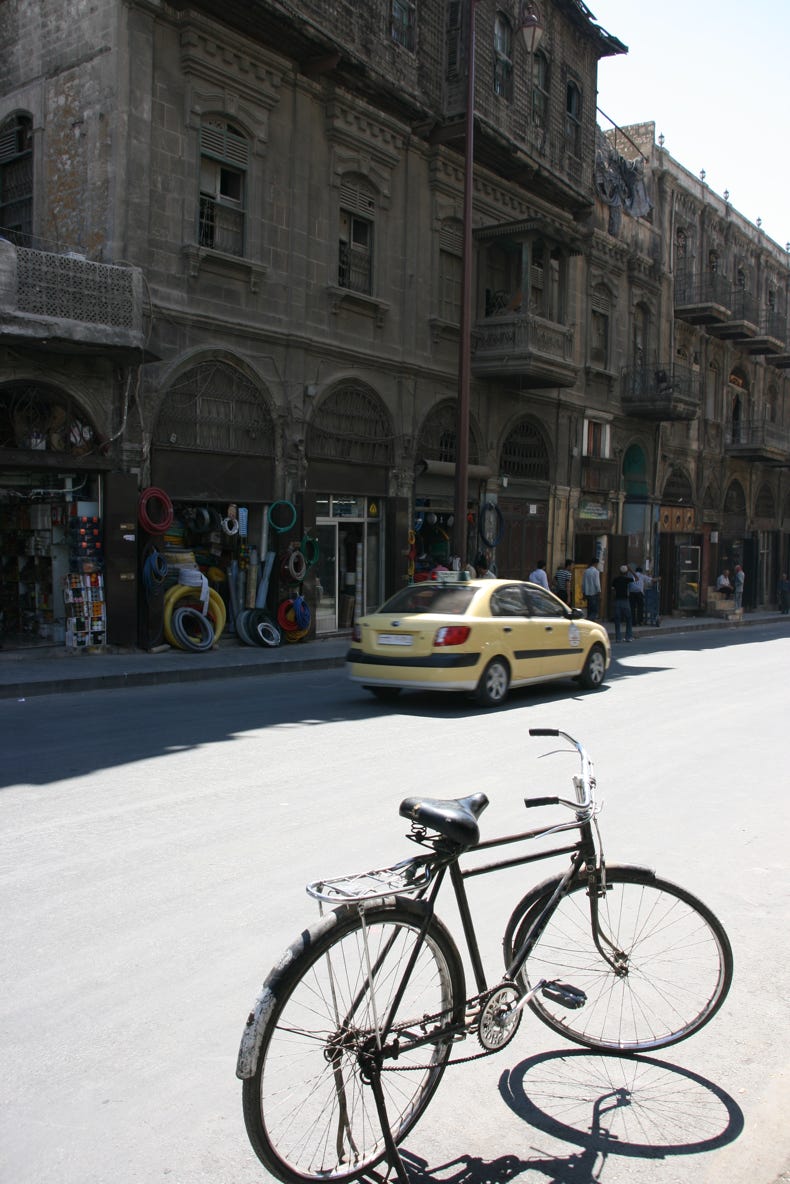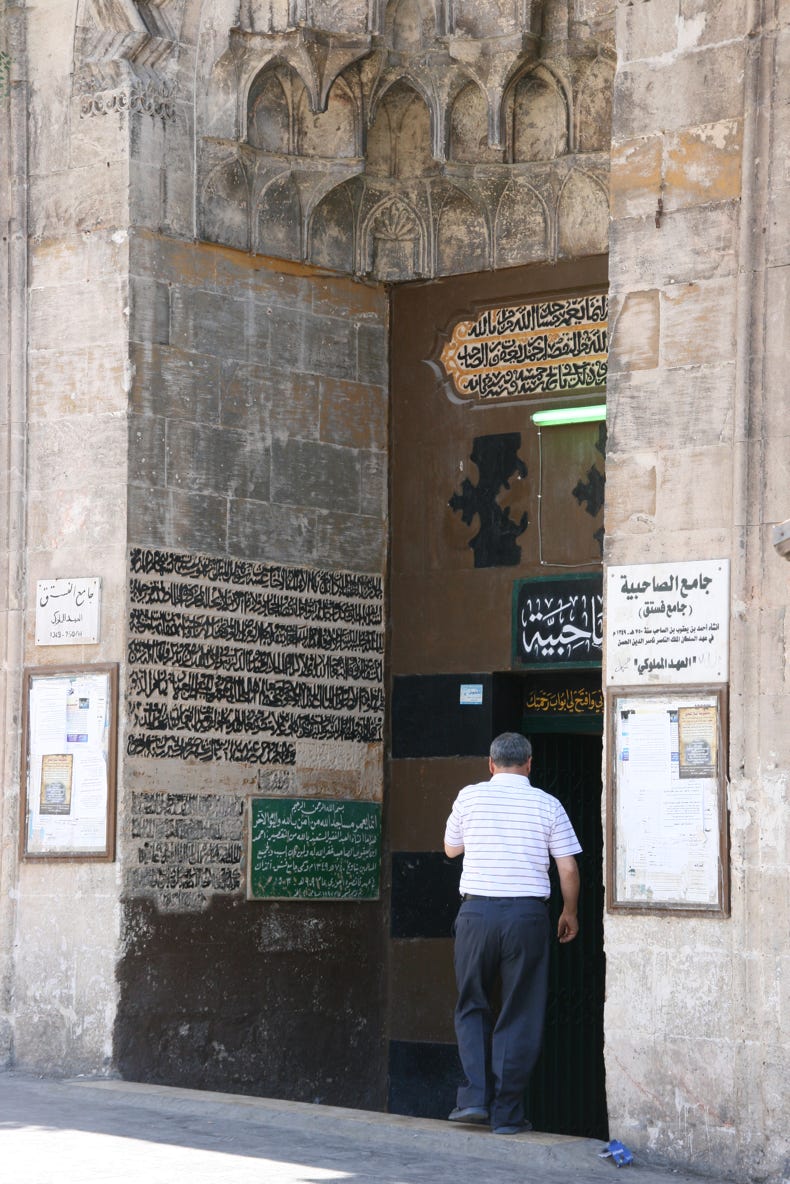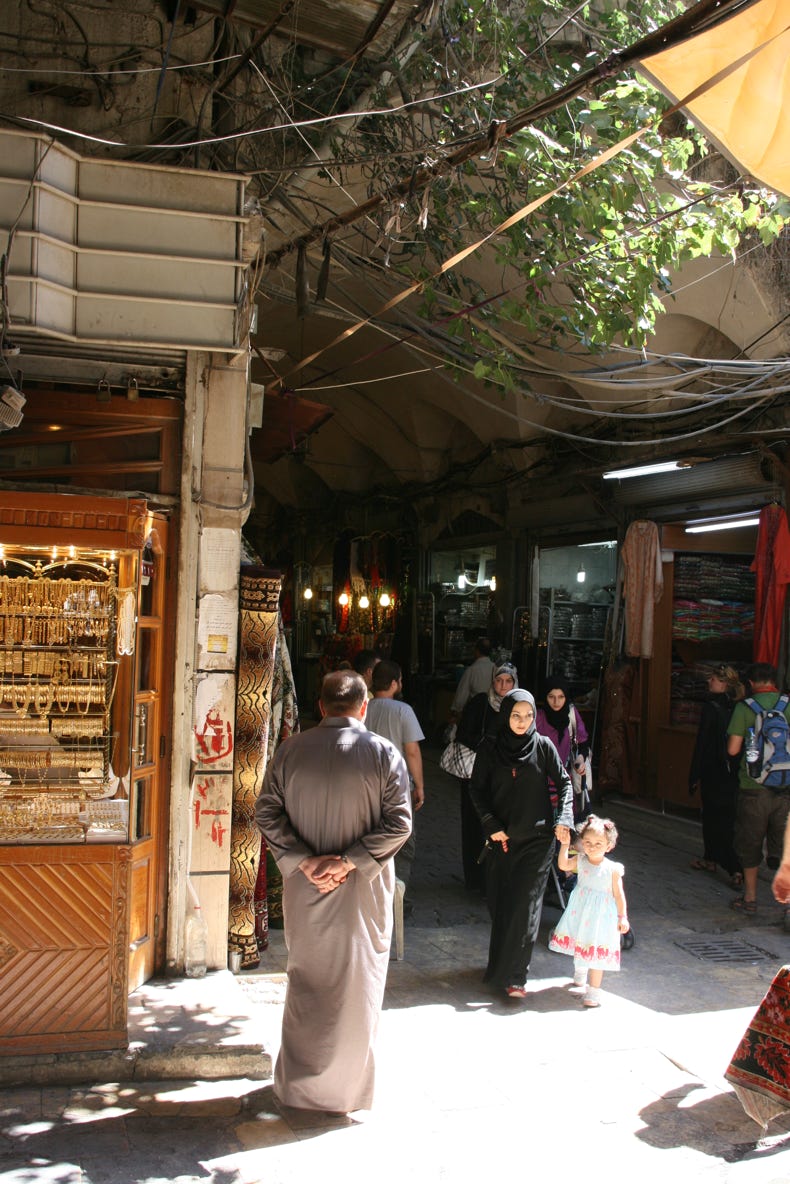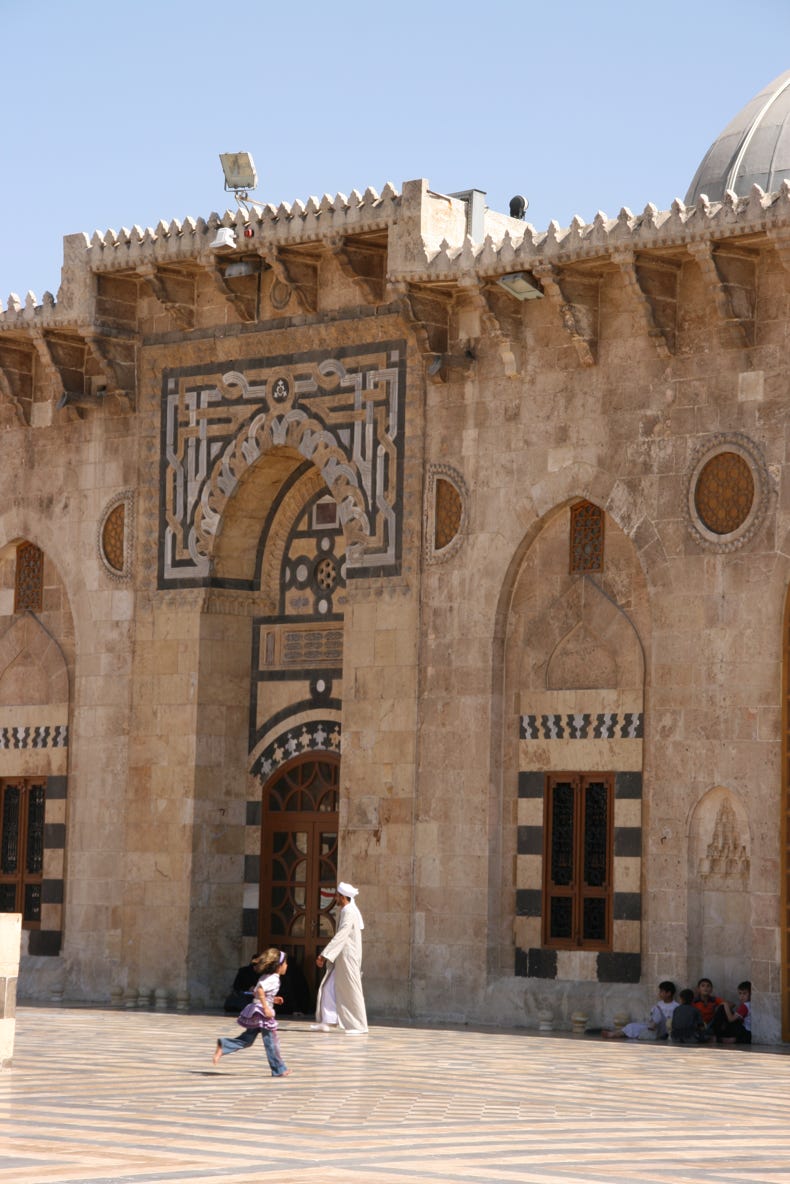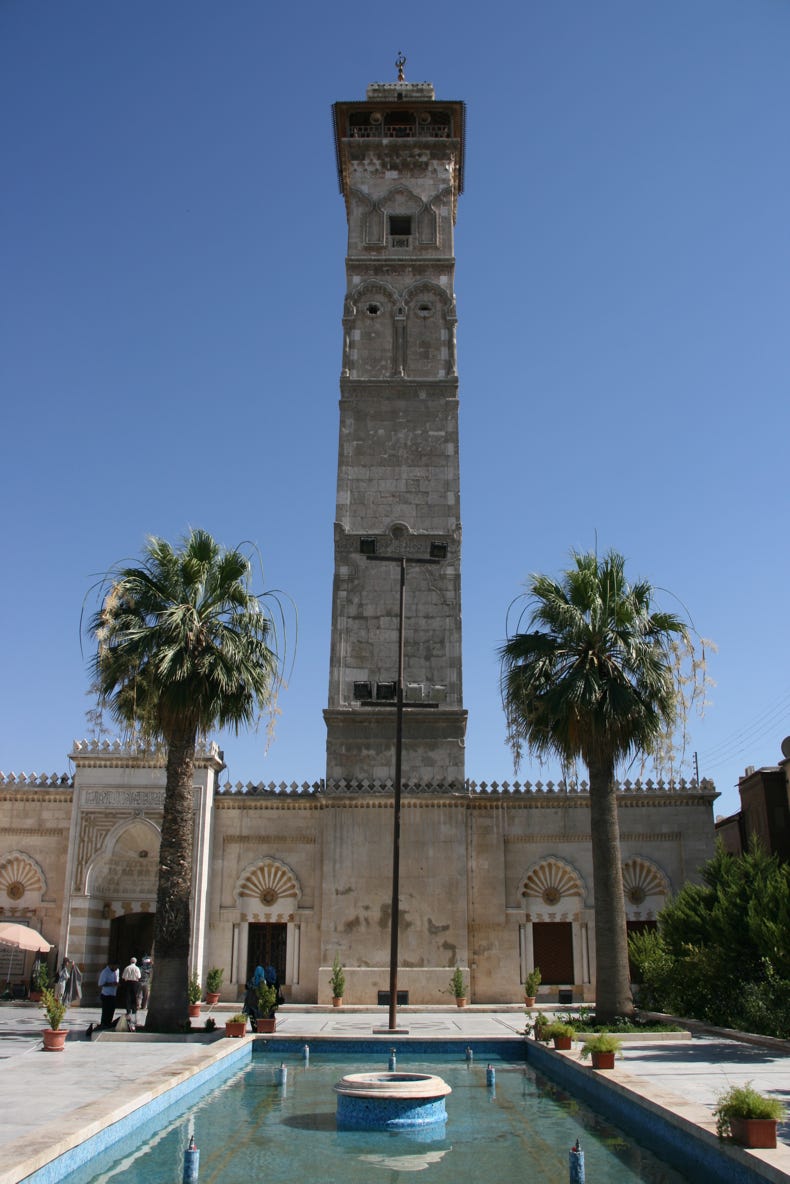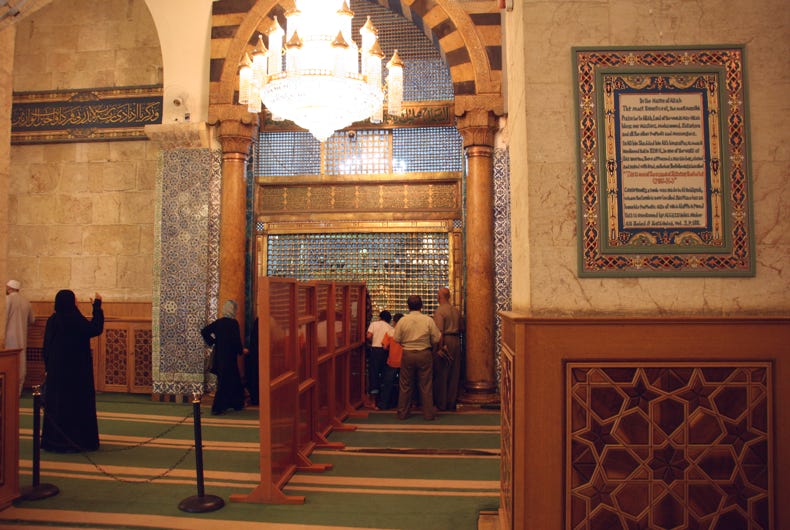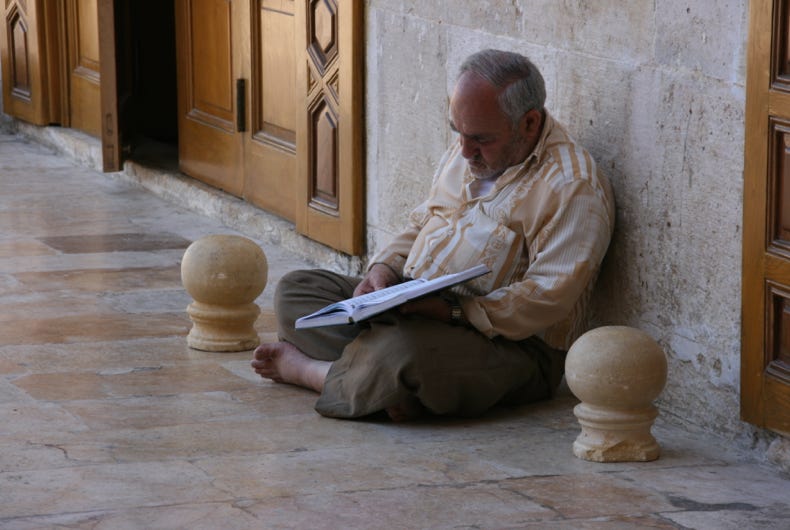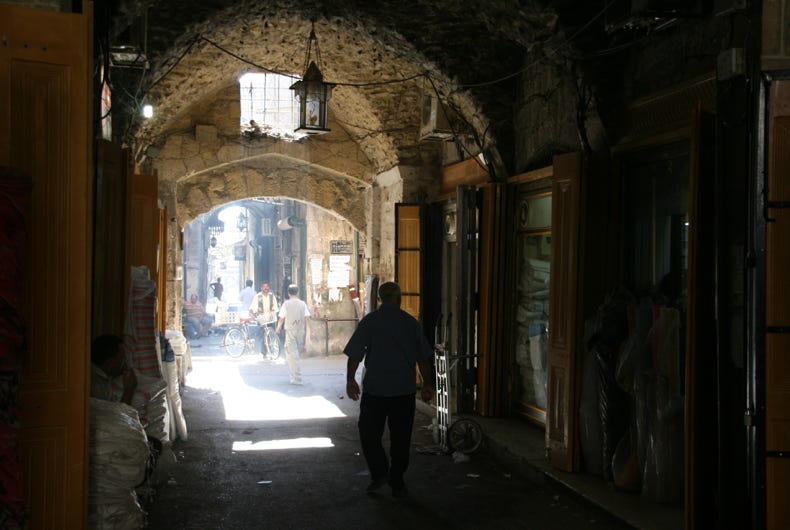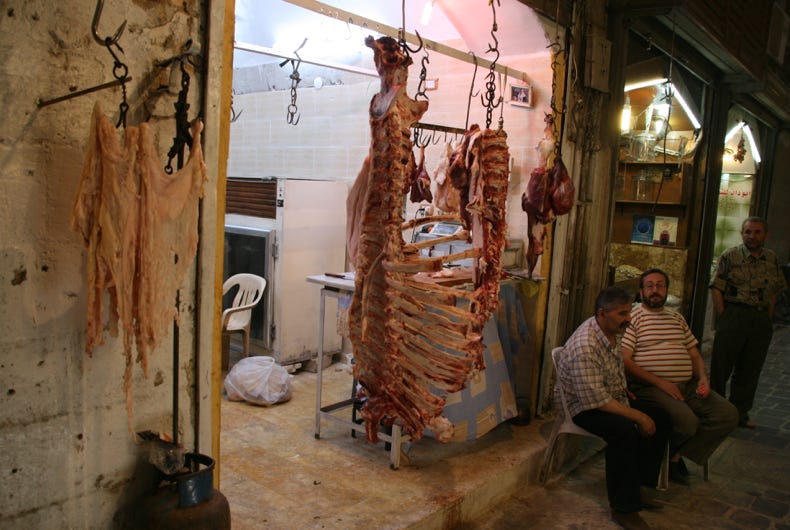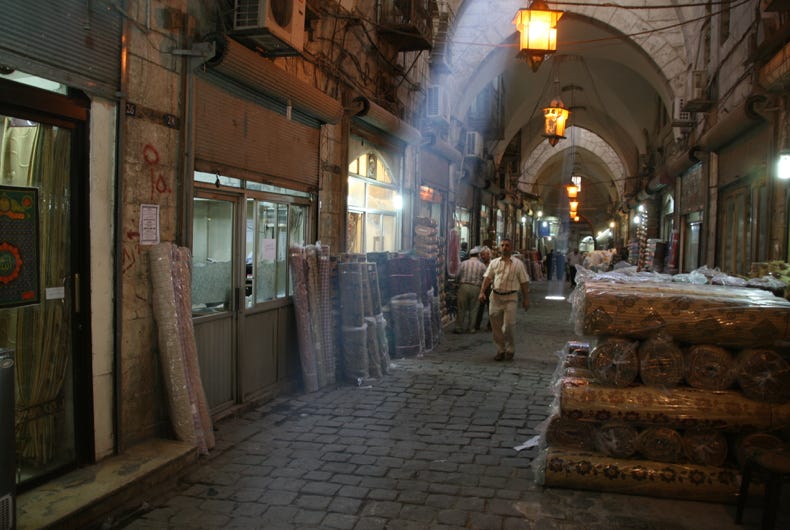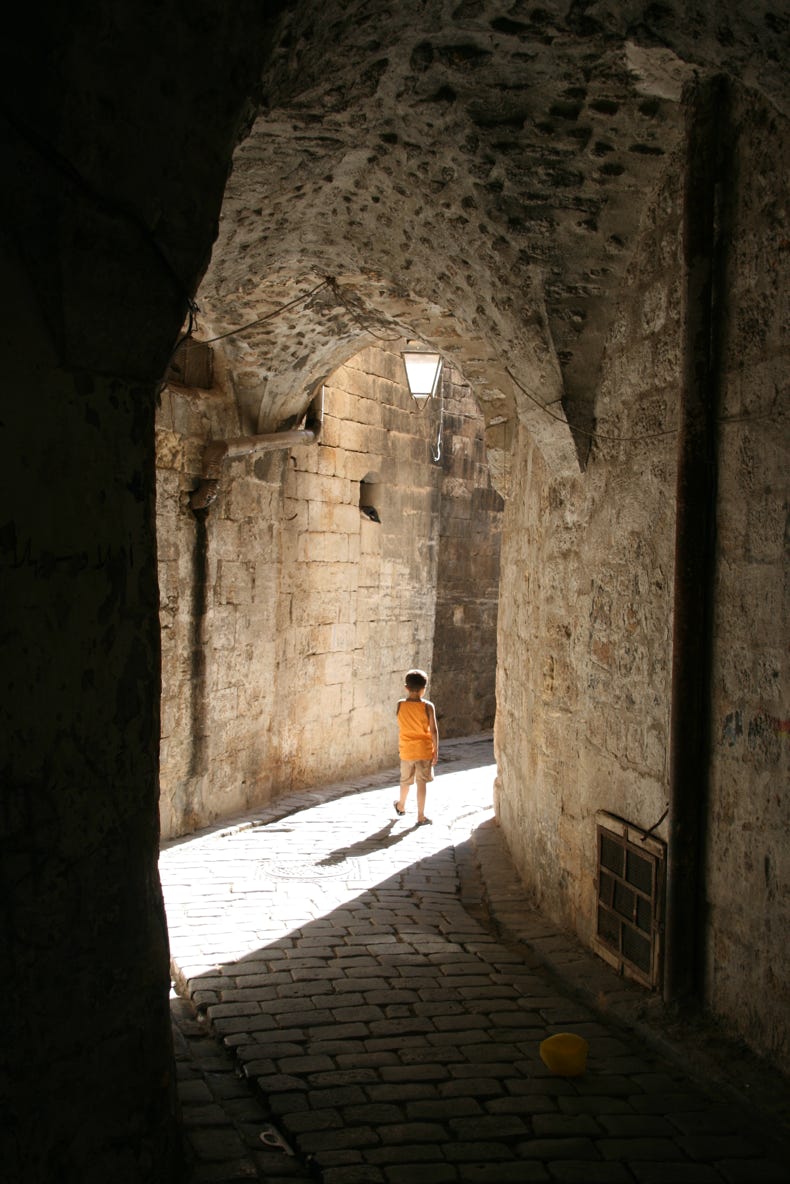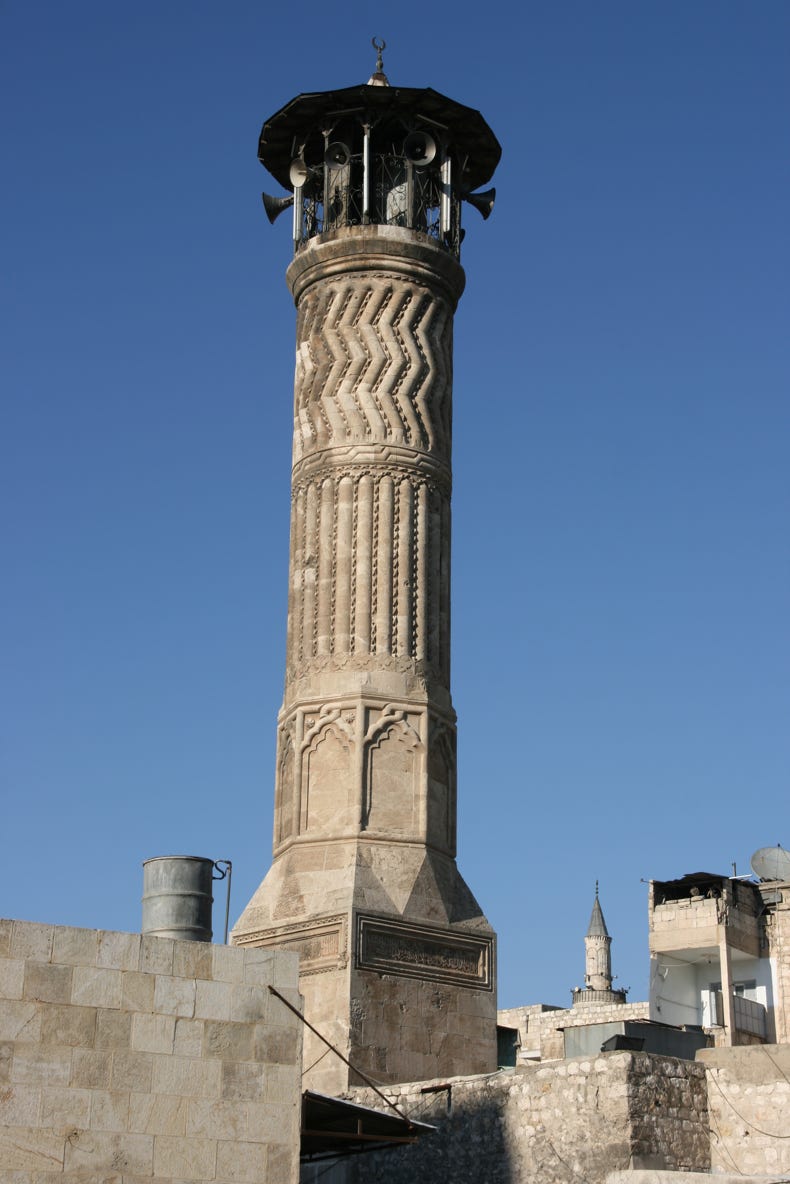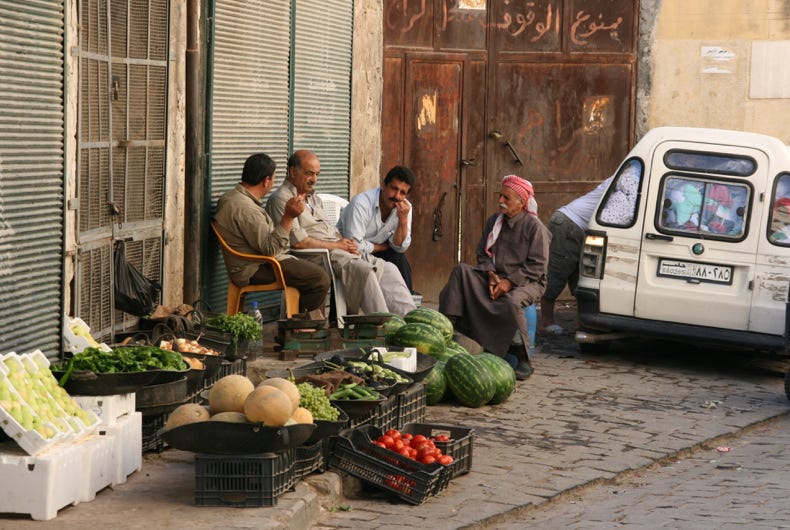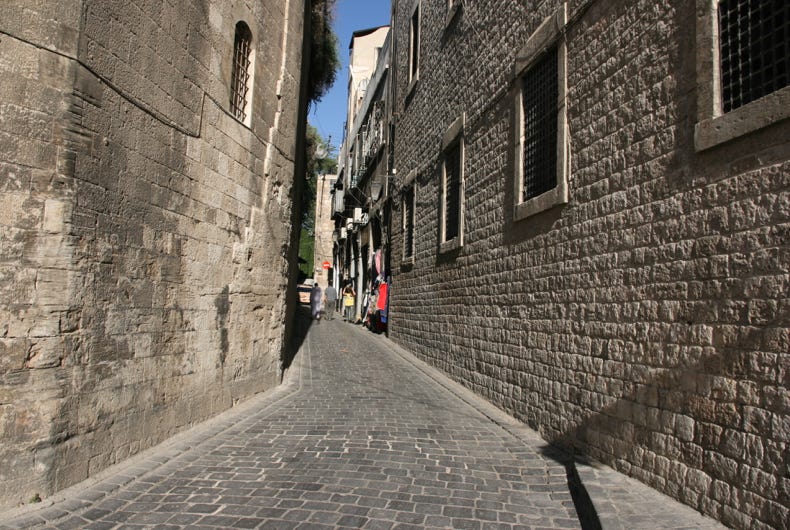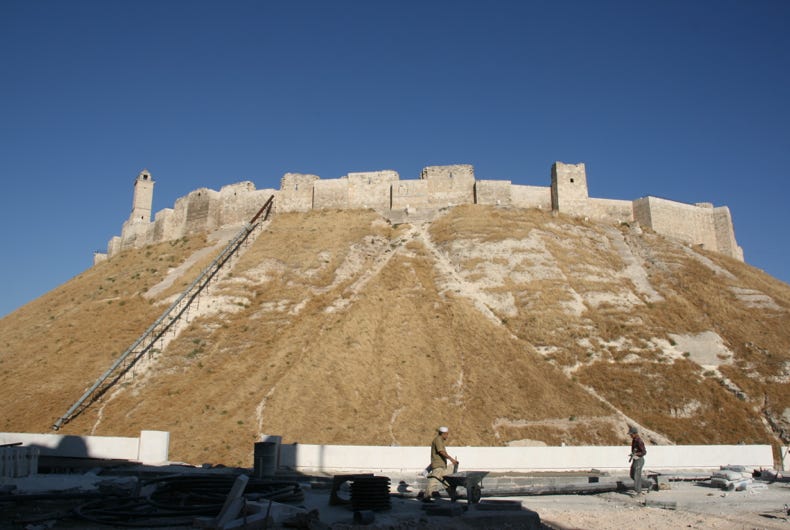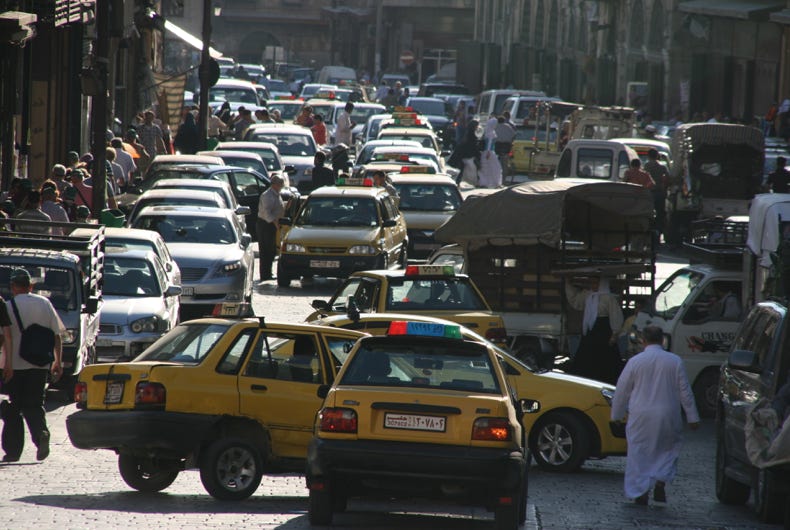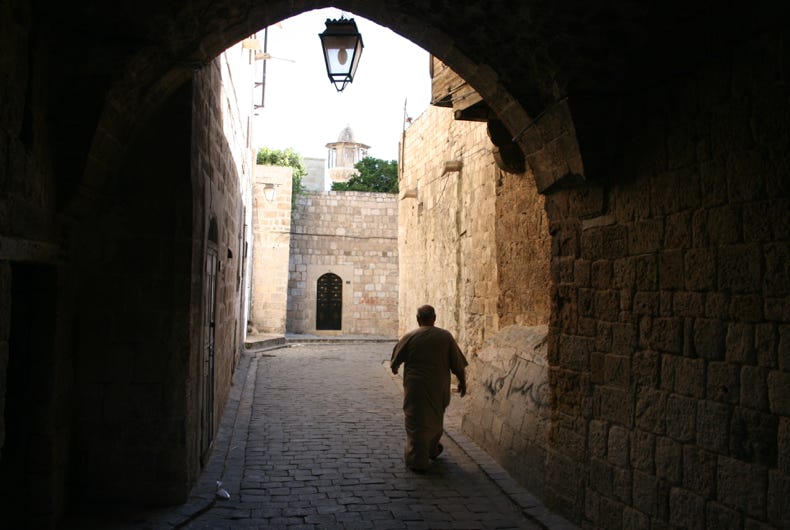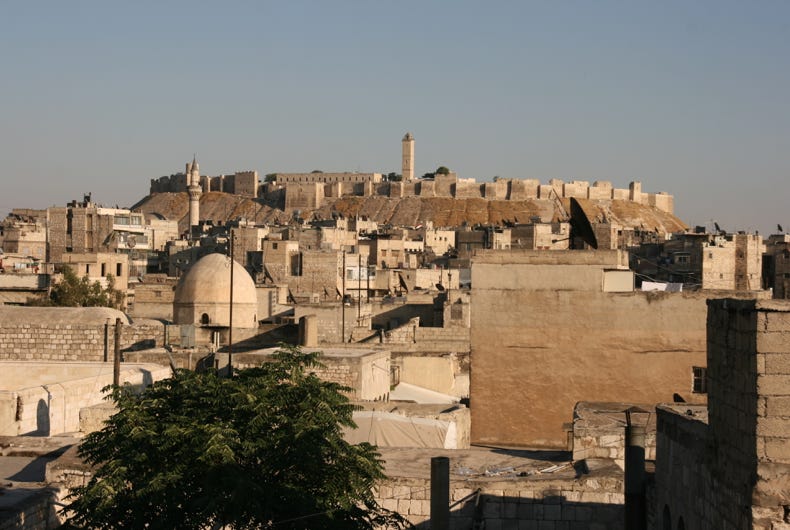


The guidebook was right. Aleppo in Syria’s far north is like an evocation of ‘The Thousand and One Nights’. The old city is magical, and I am so glad I have allowed two days to explore it because our day today was simply not enough.
We left our hotel in Hama at a little after 8:30 am this morning and took a little yellow taxi to the bus station where, after several checks of our passports, we boarded the 9:30 am bus to Aleppo (i.e the one that left at 9:45 am). Although two and a half hours were allowed for the trip, it was soon evident that the excellent roads would mean that the 150 kilometre journey would be completed much more quickly. We arrived in Aleppo at about 11:15 am.
As the bus station is situated on the edge of the city, we needed to take a taxi to our hotel. You never need to search for a taxi in Syria – taxi drivers find you – and I had several offers of rides while I was disembarking from the bus even before I had stepped foot on the ground. I negotiated a fare of 150 pounds for the trip (about $3) after the driver assured me he knew where the hotel was located (in the Old City, towards its northern edge). It soon became clear that neither he nor his friend who was riding in the front seat (the mechanic, I think) had any idea where the hotel was situated.
Fortunately, I had printed a map showing the location, which I passed to the mechanic. Unfortunately, the mechanic couldn’t read maps. So we spent quite a bit of the journey with the driver, cigarette in one hand, map in the other, driving while looking at the map rather than the road, clearing the way ahead of us with seemingly incessant blasting of the car horn. It worked brilliantly and we soon arrived at our hotel, a renovated courtyard home at the eastern end of the Christian quarter of Aleppo.
As the day was quite hot, we rested for a couple of hours after arriving, catching up on e-mails (me) or sleeping (Andrew). At about 2:30 pm we set out to start exploring the city. It took a walk of only a few blocks to bring us into the heart of the Old City of Aleppo, with its narrow, winding, covered souks (markets) like the one shown in the photo at the top of this page. Naturally there were also some outside shopping areas, which were also colourful and bustling areas, as well as a labyrinth of fascinating narrow laneways that led to homes, courtyards, factories, mosques, schools, and everything else might expect to find in a Syrian city.
One particular highlight of the Old City was entering the Great Mosque, right in the heart of the Old City. It is wonderful that non-Muslims are permitted – actually encouraged – to enter mosques in Syria, as it is a great way to develop an appreciation of the practices and beliefs of Islam. Just ten years newer than the Umayyad Mosque that we had visited a few days earlier in Damascus, it was a somewhat smaller than its cousin in Damascus and plainer in architectural style. Nonetheless, it did have a noteworthy free standing square minaret, and the outside courtyard had the same relaxed atmosphere with children playing and people chatting that we had witnessed in Damascus. One noteworthy difference, however, was that this mosque had a large number of blind men sitting in a line along one side of the courtyard, chanting recitations from the Qu’ran, presumably completely from memory.
As was the case in Damascus, we were allowed to enter the large prayer hall. Unlike Damascus, however, the atmosphere was more solemn, with many men sitting on the floor resting against pillars, quietly reading the Qu’ran or meditating. Nonetheless, we were encouraged to take photos freely. At one end of the prayer hall, a group of men was engaged in collective study, while a special focus of devotion was found about half way along the prayer hall behind a grilled screen, a marble box supposedly containing the head of Zacharias (father of John the Baptist). This shine (if that is the correct term) was attracting large numbers of men and women (on separate sides of a screen, of course) while we were there.
We visited many other places this afternoon – a soap factory, a madrassa, a former diplomatic compound that is now a centre of textiles trading, and so on, but in a professional sense the highlight was an exhibition in the 16th century Al-Shibani School that described the measures being undertaken to improve Aleppo’s urban environment and implement urban renewal. The information provided was excellent, and it gave me many pointers of things to watch for during our explorations tomorrow.
Several of the major urban problems facing Aleppo focus on the consequences of decisions taken under French rule to build several major roads through the centre of the Old Town. This has led to air pollution, noise, dismemberment of communities, dangerous conditions for pedestrians and, of course, severe traffic congestion. The problems of traffic congestion and pedestrian safety are serious ones indeed for the residents of Aleppo.
The hotel where we are staying (the Dar Zamaria) is an example of the urban renewal being undertaken in Aleppo. Tourism is seen as part of the conservation strategy, but there are strict controls on the number of old buildings that can be converted into accommodation for tourists. The philosophy being followed is a sensible one I think – “tourists feel comfortable where residents feel at home”.
To balance this enthusiasm, I should point out that our room has no windows. I am not sure what it was before it was converted into our room (a grain store perhaps ???), but it seems a small price to pay to support Aleppo’s urban renewal priorities.

